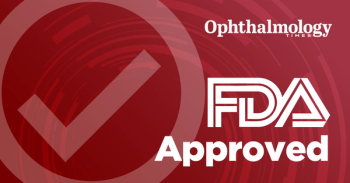
KALAHARI Study shows THR-149 is safe, well-tolerated for DME
Arshad M. Khanani, MD, MA, told attendees at the Bascom Palmer Eye Institute’s 19th annual Angiogenesis, Exudation, and Degeneration 2022 Virtual Edition that data from the part A of the KALAHARI trial is encouraging, showing that THR-149 has the potential to improve vision in patients with DME who have a sub-optimal response to anti-VEGF therapies.
Reviewed by Arshad M. Khanani, MD, MA
The phase 2 part A results of the KALAHARI Study that assessed the effects of THR-149 (Oxurion), a plasma kallikrein (PKal) inhibitor, found that up to 3 intravitreal injections were safe and well-tolerated in patients with diabetic macular edema (DME), according to Arshad M. Khanani, MD, MA, who reported the results at the Bascom Palmer Eye Institute’s 19th annual Angiogenesis, Exudation, and Degeneration 2022 Virtual Edition.
Khanani is from Sierra Eye Associates in Reno, Nevada.
PKal is a principle driver of DME pathology apart from vascular endothelial growth factor (VEGF) and is a validated target for edema, inflammation, and prevention of microhemorrhages, Dr. Khanani explained.
The value of a PKal inhibitor lies in the fact that it can potentially treat 40% to 50% of patients who do not respond well to anti-VEGF therapies.
Part A study
In this study, 20
Patient inclusion was based on a suboptimal response to 5 or more anti-VEGF injections who had a CST of 320 microns or more and a BCVA of 73 letters or fewer and 39 or more Early Treatment Diabetic Retinopathy Study letters. Patients who were included also had had a last injection of aflibercept (Eylea, Regeneron Pharmaceuticals) 3 to 8 weeks before study screening.
Part A results
The patients in the 0.01-, 0.04-, and 0.13-mg groups were similar at baseline, i.e., a mean age of 63.4 years, 95% Caucasian, and 60% male. The groups contained 6, 6, and 8 patients, respectively.
Most patients had mild-to-moderate diabetic retinopathy (DR). Two patients randomized to the 0.01-mg dose had more severe DME and DR for a longer time. During the year before screening for this study, 80% of patients had received more than 5 anti-VEGF injections.
The CST in the group treated with the 0.13-mg dose was slightly thinner (421 microns compared with 465 and 470 microns in the 2 lower doses).
No serious adverse events or intraocular inflammation developed. Any adverse events that did develop were mild to moderate; 1 adverse event was associated with the treatment and 1 with the injection procedure. The number of adverse events did not increase in association with the increasing dose or number of injections.
“In the high-dose group, at month 3, 1 month after the third injection, the BCVA increased by a mean of 6.1 letters,” Khanani said. “The gain in BCVA was sustained out to month 6 with no need for rescue treatment.”
In addition, in the same group, the CST was stable out to month 6.
Post-hoc analysis
A post-hoc analysis of the BCVA changes found that 2 patients had abnormalities on optical coherence tomography (OCT). Their exclusion from the analysis showed a mean letter gain in BCVA of 9 or more letters that remained out to month 6.
In the high-dose group, 50% of subjects had a 2-line improvement in BCVA out to month 6 without needing rescue therapy.
The take-home messages from part A are that up to 3 intravitreal injections of THR-149 were safe and well-tolerated. A mean gain of 6.1 letters of BCVA was seen at month 3 that was sustained out to month 6 accompanied by a stable CST.
Part B
The target population was refined and patients with imaging abnormalities were excluded.
Based on the results in part A, the high-dose was selected for evaluation during part B when the dose will be compared with aflibercept. Patients are currently being enrolled in part B.
“The data from the part A of the KALAHARI trial is encouraging,” Khanani concluded. “It shows that THR-149 has the potential to improve vision in patients with DME who have a sub-optimal response to anti-VEGF therapies.”
Newsletter
Don’t miss out—get Ophthalmology Times updates on the latest clinical advancements and expert interviews, straight to your inbox.


















































.png)


